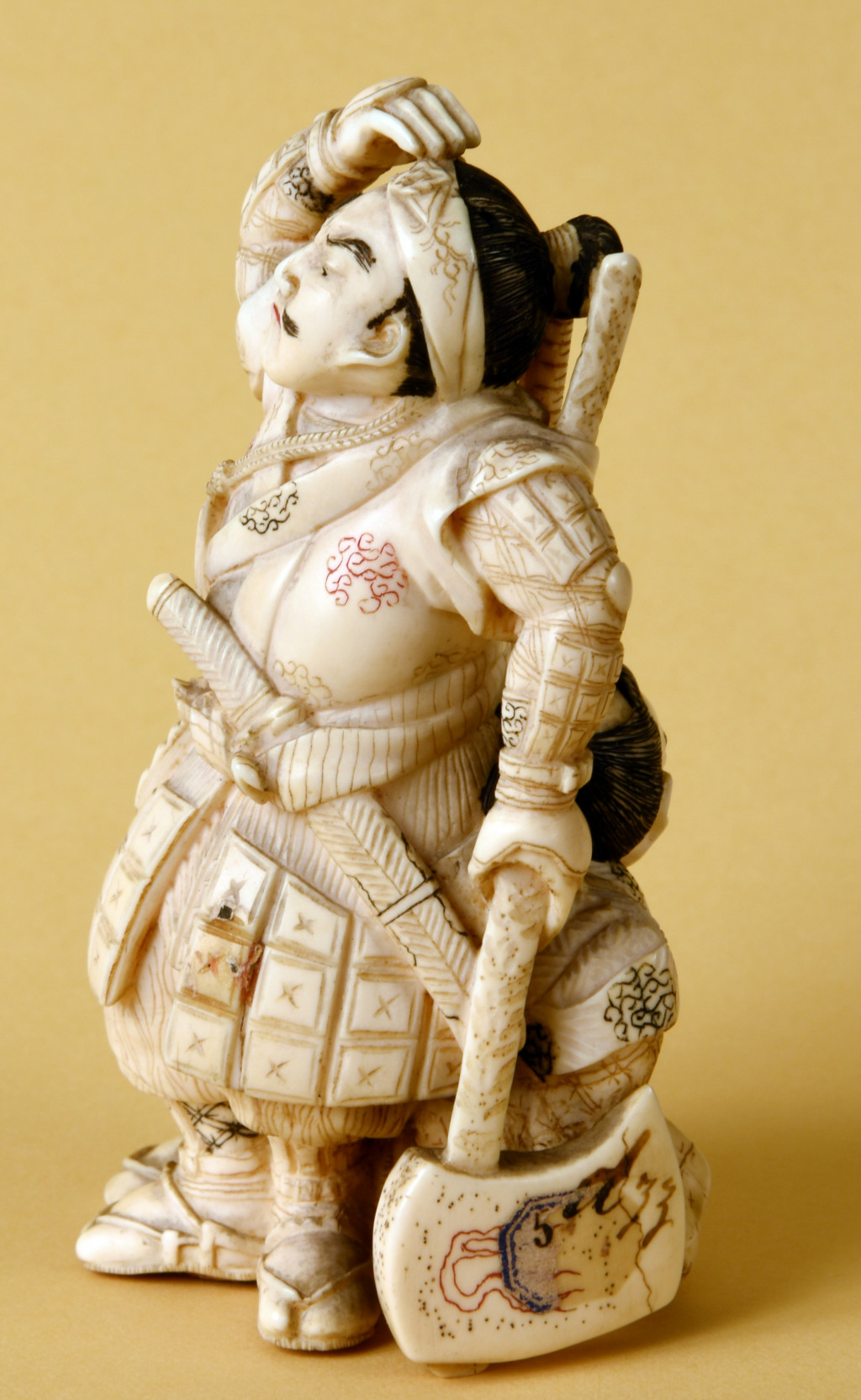
MAUGIN Narcisse (EN)
Biographical Article
Little is known today about the life of Narcisse Maugin. It has been determined that he was married, although the wedding date and his wife’s name have not been established. At least one child, named Aimée, was born of their marriage.

A Collection of Asian Art for the Musée de Chartres
Narcisse Maugin, a diplomat stationed in Japan, deposited his collection of non-Western art at the Musée des Beaux-Arts de Chartres as of 1904 and subsequently bequeathed it to this institution. This collection included Egyptian antiquities (on deposit at the Musée de Châteaudun); bronzes from India, China, and Japan; and a remarkable assembly of objects from the Far East, primarily Siam and Cambodia, including carved ivories, Indochinese porcelain, and statuettes from Tanagra and Asia Minor. Narcisse Maugin's collection of Asian art was made up primarily of small and medium-sized pieces, of which some date from quite early periods. A total of 601 objects are conserved in the collections of the Musée de Chartres.
An exchange of letters from 1903 between the mayor and Monsieur and Madame Maugin indicates their wish to donate part of this collection to the museum of Chartres, which the mayor approved. The location for exhibiting the collection, chosen in collaboration, would be the site of the Layé collection, in the "P" room of the museum following renovations. This room would later serve as a meeting room for the museum council. A first donation was made by Narcisse Maugin in 1904. A second donation was received by the museum in July 1911. A final bequest came from the Maugin collection in March 1913 after Narcisse Maugin had passed away in September 1911.
The provenance of the objects in the Maugin collection remains vague. We do know that Mr. Hardouin, of the Conseil de France in Gibraltar, who was staying in "Hedo, China" (minutes dated October 12, 1913), from which he brought back works, deposited pieces with Narcisse Maugin. Maugin bought some of them, notably two carved Chinese tusks. The pieces purchased by Maugin from Hardouin entered the museum's collection with the 1911 donation. However, Hardouin claimed the tusks, arguing that they belonged to him, a claim that was denied by the mayor in a letter from Narcisse Maugin to his child.
The report of October 12, 1913 mentions objects missing from the Maugin collection that had been donated to the museum and furniture items being kept at the "hospital". After complaints from the mayor of Chartres to a certain Mr. Pluche, notary (33, rue de la Chapelle), then to the auctioneer Hyppolyte Boudu, the latter gave a response indicating that what was missing had not been donated to the museum, as the objects had been deemed unimportant. The minutes of January 26, 1915 indicate that the register of entries and exits had not been updated since 1896, and that since this period there had been an important donation, namely that of Narcisse Maugin. Mr. Jusselin was mandated to update the register, and Maugin's first donation was inventoried in 1911.
In 1953, Mr. B.C. Rowe (residing in London) requested information from the museum on a statuette from the bequest (statuette of Tangara).
Related articles
Personne / personne
Collection / collection d'une personne
